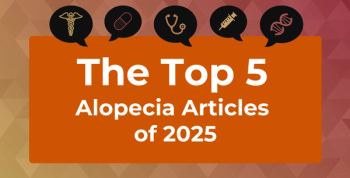
For COPD Treated in Primary Care, ICS May Be Inappropriately Prescribed
Inhaled corticosteroid (ICS) therapy was not the most appropriate treatment for many patients with chronic obstructive pulmonary disease (COPD) in a review of patient records at 2 US primary care clinics.
A retrospective study at an academic medical center in Arkansas found that inhaled corticosteroid (ICS) therapy was not the most appropriate treatment for many patients with
The study,
The Global Initiative for Chronic Obstructive Lung Disease (GOLD) report set guidelines for COPD care, with bronchodilators, both short and long term, as the cornerstone of therapy. ICS is more commonly used in asthma management. For COPD, the authors note that ICS is more appropriate when the patient has a history of hospitalizations for COPD exacerbations or at least 2 moderate exacerbations per year despite long-acting bronchodilator maintenance therapy, a blood eosinophil count greater than 300 cells/mcL, or a history of or concomitant asthma
In this study, 100 eligible patients were treated with ICS therapy in combination with a long-acting beta agonist over a 24-month period from January 1, 2019, to December 31, 2020. Of that group, 55% of patients also received a long-acting muscarinic antagonist. In addition, 32% of patients were hospitalized or visited the emergency department as a result of COPD in the previous year.
Few patients had characteristics that would suggest a benefit from using ICS. Approximately 47% and 36% of patients had a history of pneumonia and a blood eosinophil count below 100 cells/mcL, respectively, suggesting they would not benefit. Moreover, having a history of pneumonia and using ICS also increases the risk of complications. In addition, most patients did not have a history or diagnosis of asthma.
“The absence of an asthma diagnosis in combination with the exacerbation rate for the populations suggests that ICSs are overprescribed in primary care for COPD patients who are not likely to experience clinical benefit according to GOLD guidelines,” the authors reported.
Why were GOLD guidelines not being followed? A review of the primary care records showed an overall lack of documentation of GOLD classification status as well as Modified Medical Research Council or COPD Assessment Test scores. Primary care providers indicated to researchers that the barriers to following guidelines included a lack of resources, not recognizing the tools available to them in electronic health records, and preferring other guidelines.
“Additional studies are needed to address which specific intervention might improve prescribing patterns though guideline-concordant decision-making, although educational interventions targeted at reducing guideline unfamiliarity and increasing provider self-efficacy for guideline implementation have been suggested,” said the investigators.
Limitations included a small sample size and a lack of data, such as weight and height, which could impact the prescribing of ICS or a referral for pulmonary rehabilitation.
“By gaining a better sense of clinical characteristics that have the ability to drive prescribing patterns, as well as barriers that exist for providers in selecting therapy for COPD that align with guideline recommendations, appropriate interventions may be identified to improve existing obstacles and optimise patient care,” said the investigators.
Despite limitations, the study offers insight for implementing more efficient methods of clinical decision-making support tools, reducing costs, and improving outcomes for patients, they concluded.
Reference
Strain M, Boehmer K, Usery J. Managing chronic obstructive pulmonary disease in primary care: clinical characteristics of patients receiving inhaled corticosteroids. J Pharm Pract Res. Published online October 4, 2022. doi:10.1002/jppr.1835
Newsletter
Stay ahead of policy, cost, and value—subscribe to AJMC for expert insights at the intersection of clinical care and health economics.








































